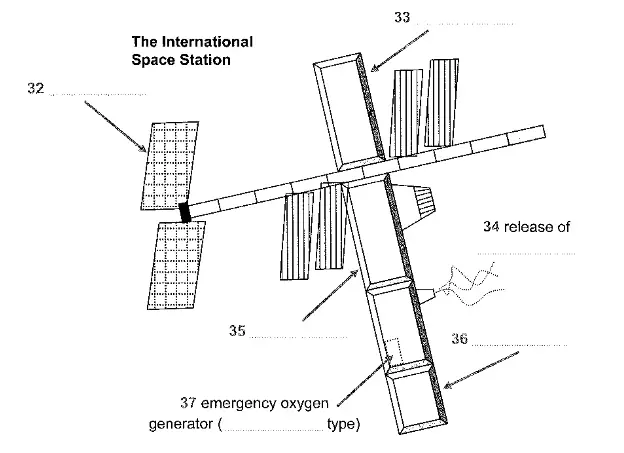Just before sunrise, on a clear night, look up, and you may be able to see it travelling steadily across the dark starry sky. It will take about four minutes to pass — too fast to be a planet, too slow to be a shooting star. What is it, then? It is the International Space Station (ISS), on one of its 15 orbits per day. The sun’s light has lit it up while you still remain in night’s darkness, but don’t discount that white dot as something inconsequential. About $100 billion has been spent on it so far, and it will need much more money by the time it ceases operation, sometime after 2025.
This enormous cost could not, of course, be paid by one nation. The ISS was necessarily a joint effort by no less than five different space agencies: America’s NASA, Russia’s RKA, Canada’s CSA, Japan’s JAXA, and the European equivalent, ESA. Similarly, with the difficulty in ferrying payloads into this environment, a project of the scale of the ISS could not be a ready-made station (such as the earliest varieties). The ISS was built module by module, each flown into space and then intricately connected—eventually becoming in appearance an awkward conglomeration, yet when viewed with our planet Earth in the background, a grand and inspiring monument to humankind’s ingenuity.
Such a construction would immediately break to pieces under the influence of any gravity — but, of course, being in orbit, this force is not felt. The station is constantly freefalling under Earth’s gravitational pull, yet never hitting the planet due to the station’s lateral velocity. This will, however, not continue forever. With its low-earth trajectory, there is an aerodynamic drag from the faint atmosphere through which the station continually ploughs. This results in a small yet steady and perceptible loss of speed, and consequent orbital decay. Contributing to this loss are, surprisingly, tidal forces. Being so large and loosely connected, the parts of the ISS further from the Earth flex more than the parts closer, using up energy.
The largest component of the ISS is the Truss Structure, a non-pressurised ten-segment spine, upon which are connected the station’s extensive solar arrays at one end, and thermal radiators towards the centre. Perpendicular to this are the pressurised modules. The station actually began with one of these: Zarya, first launched in 1998. Only two weeks later, Unity was directly attached to this, its most notable feature being the protruding Cupola — a large seven-windowed viewing room, absolutely essential for the psychological wellbeing of the crew. It took almost two more years before Zvezda was attached to Zarya’s opposite end. Later, the Truss Structure was fixed to the Unity Module, followed by the Harmony Module beyond that.
The station’s interior is no less complicated, and with a six-member crew staying onboard for up to six months, the life-support systems are crucial. Being in the airless and deadly vacuum of space, it goes without saying that atmospheric control — that is, maintaining a stable Earth-like atmosphere — is the most important element. This has, in fact, always presented the greatest challenge in spacecraft design. In 1967, the Apollo 1 craft experimented with pure oxygen, to its regret. Although this allowed a lower air pressure (better from an engineering standpoint), it more easily fuels combustion. A random spark started a fire which raced through the craft, killing all three crew members, after which the experiment has never been tried again.
The ISS’s main source of oxygen is the ‘ Elektron’ system, which uses an electric current to break apart water molecules. The oxygen produced is vented into the pressurised modules, while the other by-product, hydrogen, is vented into space. This system generates enough supplies for a six-member crew, although it has proven notoriously unreliable, so much that the emergency backups have been regularly required: bottled oxygen (ferried up by unmanned supply craft), a solid-fuel oxygen generator, and a chemical one, in the Zvezda and Zarya Modules, respectively. Their output is circulated with strong (and noisy) fans, without which the air around immobile astronauts would stagnate. A bubble of their own exhaled carbon dioxide would form, leaving them oxygen-deprived and struggling to breathe.
This indicates that life on the ISS is no pleasure cruise. The close and cramped quarters, the awkward and uncomfortable facilities, the strict eating, hygiene, and two-hour-per-day exercise protocols, the dizziness and fatigue induced in that weightless environment, and the long workday of maintenance and scientific experiments, all create a difficult life. It is this, and the human isolation, that can particularly strain relationships and aggravate tensions. And if this was not enough, there is a direct physical risk from solar radiation due to the periodic flares that erupt from the sun’s surface. As one returning crew member said, “It’s an interesting place for a visit, but you wouldn’t want to live there.”
Questions 27-31
Answer the questions. Choose NO MORE THAN TWO WORDS from the passage for each answer.
27. What does the ISS physically look like from Earth?
28. What does the ISS physically look like from space?
29. What forced the five space agencies to work together on the ISS?
30. What were the original space stations like?
31. What stops the ISS from striking the Earth?
Questions 32-37
Label the diagram with specific terms. Choose NO MORE THAN TWO WORDS from the passage for each answer.

Questions 38-40
Complete the table by giving cause of each effect or incident. Choose NO MORE THAN TWO WORDS from the passage for each cause.
| Effect/ incident | One cause | Another cause |
|---|---|---|
| ISS slowing down | aerodynamic drag | (38)……………… |
| Apollo 1 fire | (39)…………………. | random spark |
| ISS crew-member stress | difficult life | (40)……………….. |
